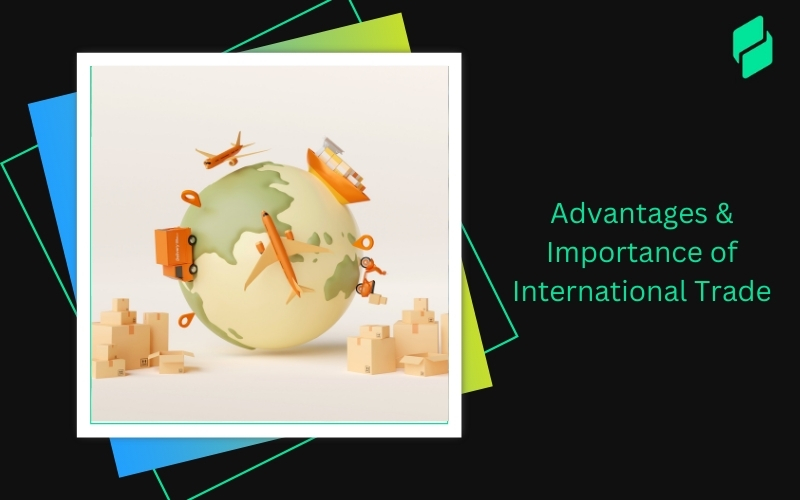Optimize your business: use unlimited savings with Pazago fulfilled now!
Get Started ->Logistic charges are a major factor in evaluating the effectiveness and profitability of supply chains in the modern, fast-paced global economy.
For both small businesses and multinational enterprises, the ability to comprehend and effectively manage these logistic charges can make the difference between success and failure.
Logistics costs encompass various expenses, including transportation, warehousing, inventory management, and administrative overheads. Each component presents unique challenges and opportunities for cost optimization.
In this article, we look into the intricacies of logistics charges, exploring their various types and the measurement methods used to manage and reduce them.
Businesses can increase their operational efficiency, customer happiness, and bottom line by thoroughly understanding these costs and putting smart cost-reduction measures into practice.
What are Logistic costs?
The expenses incurred in organizing, carrying out, and overseeing the transportation and storage of goods from their point of origin to their destination are known as logistics costs.
These logistic charges play a pivotal role in determining supply chains' overall efficiency and profitability.
The scope of logistics costs is broad, encompassing various elements contributing to the seamless flow of goods.
Components and Types of Logistic Charges
The broad category of logistics costs includes costs incurred at every stage of the supply chain, from the original creation of items to their ultimate delivery to clients. Comprehending these expenses is crucial for maximizing logistical operations and sustaining profitability.
Below is an in-depth exploration of the various components and types of logistics costs.
Four Main Logistics Costs

- Staff Labor Costs
- Definition: Wages, salaries, and benefits paid to employees involved in logistics operations.
- Scope: Includes costs for warehouse workers, drivers, administrative staff, and management personnel.
- Importance: Labor costs are significant in logistics due to the intensive nature of warehousing and transportation activities.
- Supplies and Warehouse Equipment Costs
- Definition: Expenses for materials and equipment used in logistics operations.
- Scope: Includes packaging materials, pallets, forklifts, conveyor systems, and other machinery.
- Importance: Proper investment in supplies and equipment ensures efficiency and safety in handling and storing goods.
- Warehouse Rent Costs
- Definition: Costs associated with leasing or owning warehouse space.
- Scope: Covers rent, property taxes, utilities, and maintenance.
- Importance: Effective management of warehouse rent costs is crucial for optimizing storage space and reducing overhead expenses.
- Transportation and Shipping Costs
- Definition: Expenses related to moving goods from one location to another.
- Scope: Includes fuel, freight charges, vehicle maintenance, and driver wages.
- Importance: Transportation costs are often the largest logistics expense, impacting overall supply chain efficiency and delivery times.
Detailed Examination of Inventory Management Costs
- Forecasting Costs: Expenses related to predicting future demand to maintain optimal inventory levels.
- Tools and Technologies: Investment in software and analytics for accurate demand forecasting.
- Training: Costs for training staff to use forecasting tools effectively.
- Production Units Against Demand: Balancing production volumes with actual demand.
- Overproduction: This leads to excess inventory, higher holding costs, and potential obsolescence.
- Underproduction: Results in stockouts, lost sales, and decreased customer satisfaction.
- Challenges: Issues in inventory management such as:
- Demand Variability: Fluctuations in customer demand can lead to inaccurate forecasts.
- Supply Chain Disruptions: Delays and disruptions can impact inventory levels and increase costs.
- Inventory Turnover: High turnover rates reduce holding costs but require efficient management to avoid stockouts.
Assessment of Warehousing Costs
- Performance Data Measurement: Tracking and analyzing warehouse performance metrics.
- Key Metrics: Inventory turnover rate, order accuracy, and fulfillment time.
- Technology Integration: Use of warehouse management systems (WMS) for real-time data tracking.
- Space Optimization: Efficient use of available warehouse space to reduce costs.
- Layout Planning: Strategic placement of goods for easy access and efficient flow.
- Storage Solutions: Implementation of racking systems and automated storage solutions.
- Cost Management: Strategies to manage and reduce warehousing expenses.
- Energy Efficiency: Reducing energy consumption through effective lighting and HVAC systems.
- Process Improvement: Streamlining warehouse processes to reduce labor and operational costs.
Investigation of Distribution Costs
- Efficiency in Moving Goods: Optimizing the distribution network to reduce costs.
- Network Design: Strategically locating distribution centers to minimize transportation distances.
- Routing Optimization: Using technology to plan efficient delivery routes.
- Data Management: Leveraging data to enhance distribution operations.
- Real-Time Tracking: Monitoring shipments in real-time to ensure timely deliveries.
- Predictive Analytics: Using data to anticipate and mitigate potential disruptions.
Measuring Logistic Charges
Accurate measurement of logistics costs is essential for effective supply chain management. Understanding and controlling these costs can significantly enhance a business’s efficiency and profitability.
Below, we explore the importance of selecting an appropriate time frame for cost assessment, methodologies for calculating costs across categories, data-driven systems use, and performance data's role in managing warehousing and transportation expenses.
The importance of selecting a time frame for cost assessment
Choosing the right time frame for assessing logistics costs is crucial for several reasons. Consistency in the time frame allows for comparable data across different periods, facilitating trend analysis and performance tracking.
For example, aligning cost assessments with fiscal quarters or annual budgets helps in precise financial planning and resource allocation.
Additionally, considering seasonal variations in demand and costs ensures that assessments reflect the true dynamics of logistics operations over different periods.
Businesses should also consider their specific business cycles and any operational changes that might impact logistics costs. Ensuring the selected time frame aligns with the availability and granularity of data is essential for accurate cost measurement.
Methodology for calculating costs across categories
Calculating logistics costs involves a detailed methodology that categorizes and quantifies expenses.
Direct Costs are those that can be directly linked to logistics operations, such as transportation, labor, and equipment costs. Businesses must gather detailed expense data from accounting systems and operational records to measure these costs.
Indirect Costs, such as administrative expenses and overheads, must also be allocated appropriately to logistics activities. This allocation can be based on usage rates, activity-based costing, or other relevant methods.
A comprehensive approach to cost calculation involves breaking down expenses into specific categories:
- Transportation Costs: Include fuel, maintenance, tolls, and driver wages.
- Warehousing Costs: Cover rent, utilities, equipment depreciation, and labor.
- Inventory Management Costs: Encompass storage, insurance, and handling expenses.
By segmenting costs into these categories, businesses can identify key cost drivers and areas for potential savings.
Utilizing data-driven systems for precise measurement and control of logistics expenses
Adopting data-driven systems is pivotal for precisely measuring and controlling logistics costs. Modern logistics management systems provide real-time visibility into expenses, enabling businesses to track costs accurately and make informed decisions.
These systems often incorporate advanced analytics and reporting tools that help identify cost trends, variances, and inefficiencies.
By adopting big data and machine learning algorithms, businesses can predict future costs and optimize logistics operations accordingly.
For example, predictive analytics can help forecast demand, directly impacting inventory and transportation costs.
Role of performance data in managing warehousing and transportation costs
Performance data plays a critical role in managing warehousing and transportation costs.
Key performance indicators (KPIs) such as order fulfillment times, inventory turnover rates, and transportation efficiency metrics provide valuable insights into the operational effectiveness of logistics processes.
Monitoring these KPIs helps businesses identify bottlenecks and areas of inefficiency. For instance, performance data can reveal patterns in transportation delays or warehouse bottlenecks, allowing for targeted improvements.
Moreover, performance data helps with initiatives for continuous development by offering a standard by which to gauge the effects of modifications and advancements in logistics processes.
Strategies for Reducing Logistics Costs

Efficient logistics management is crucial for maintaining a competitive edge and maximizing profitability. Here are six key strategies to effectively reduce logistics costs:
1. Consolidating Items to Optimize Purchasing and Storage
Consolidating items can significantly reduce procurement and transportation expenses by taking advantage of bulk discounts and fewer shipments. Optimizing storage through better warehouse layouts improves space utilization and reduces labor costs, minimizing overstocking risks.
2. Reviewing and Switching Carrier Options
Regularly review and compare carrier options to identify cost-efficient choices. Negotiating better rates or using third-party logistics providers (3PLs) can lower transportation costs. Different transportation modes, such as intermodal transport, also offer economical solutions.
3. Utilizing Technology for Inventory Forecasting and Management
Advanced forecasting tools and inventory management systems ensure optimal stock levels, reducing overstocking and stockouts. Real-time visibility and automated replenishment systems streamline order fulfillment and minimize manual intervention.
4. Leveraging Software to Streamline Last Mile Delivery
Specialized software for route optimization and real-time tracking reduces last-mile delivery costs by improving efficiency and coordination. Automated delivery management systems enhance accuracy and customer satisfaction, reducing costly re-deliveries.
5. Optimizing Inventory Levels
Balancing inventory levels to match demand reduces warehousing costs. Implementing just-in-time (JIT) inventory and analyzing turnover rates ensures optimal inventory, minimizing storage expenses and improving cash flow.
6. Auditing Warehouse and Inventory Management Processes
Regular audits of warehouse and inventory processes identify inefficiencies and areas for improvement. Streamlining operations through best practices, such as cross-docking and lean warehousing, enhances efficiency and lowers costs.
The Role of Third-Party Logistics (3PL) Providers
Enhancing Focus on Core Business Areas
Businesses can focus on their core competencies by outsourcing logistical tasks to Third-Party logistical (3PL) providers. Companies can concentrate on strategic projects, product development, and customer service by assigning labor-intensive and complex logistics activities to others, which will ultimately lead to increased growth and profitability.
Affordable Warehousing Through Shared Costs
3PLs offer affordable warehousing solutions by pooling resources and spreading costs across multiple clients. This shared model reduces individual storage, handling, and inventory expenses. Businesses benefit from scalable warehousing options without the need for significant capital investment in infrastructure.
Access to Bulk Carrier Discounts and Technology
3PLs leverage their large shipping volumes to negotiate bulk carrier discounts, resulting in lower transportation costs for their clients. Additionally, 3PLs often invest in advanced technology, such as warehouse management systems (WMS) and transportation management systems (TMS), which enhance logistics efficiency through better planning, tracking, and optimization.
Operational Expertise in Selecting the Right Provider
When choosing the best logistics solutions, 3PLs' operating experience is essential. To handle complicated supply chains, seasoned 3PLs contribute industry expertise, best practices, and specialized abilities. They provide customized solutions for various business requirements, ranging from distribution and inventory management to warehousing and transportation.
Conclusion
Any company hoping to maintain its competitiveness in the fast-paced market of today must comprehend and control the logistic charges. Each component, from labor costs for employees and warehouse rent to transportation and inventory control, offers different chances for cost savings.
By accurately measuring these costs and implementing strategic cost-reduction techniques, businesses can enhance operational efficiency, improve customer satisfaction, and boost profitability.
Outsourcing to Third-Party Logistics (3PL) providers can further streamline logistics operations. They offer scalable and cost-effective solutions through shared warehousing, bulk carrier discounts, and advanced technology integration.
By utilizing their experience, companies can ensure that logistics operations are managed successfully and efficiently while concentrating on their core capabilities.
Ready to improve your logistics management? Partner with Pazago for innovative solutions that help you streamline operations, reduce costs, and enhance efficiency.
Our expertise in advanced logistics technology and tailored strategies ensure that your supply chain is optimized for success.


.png)








